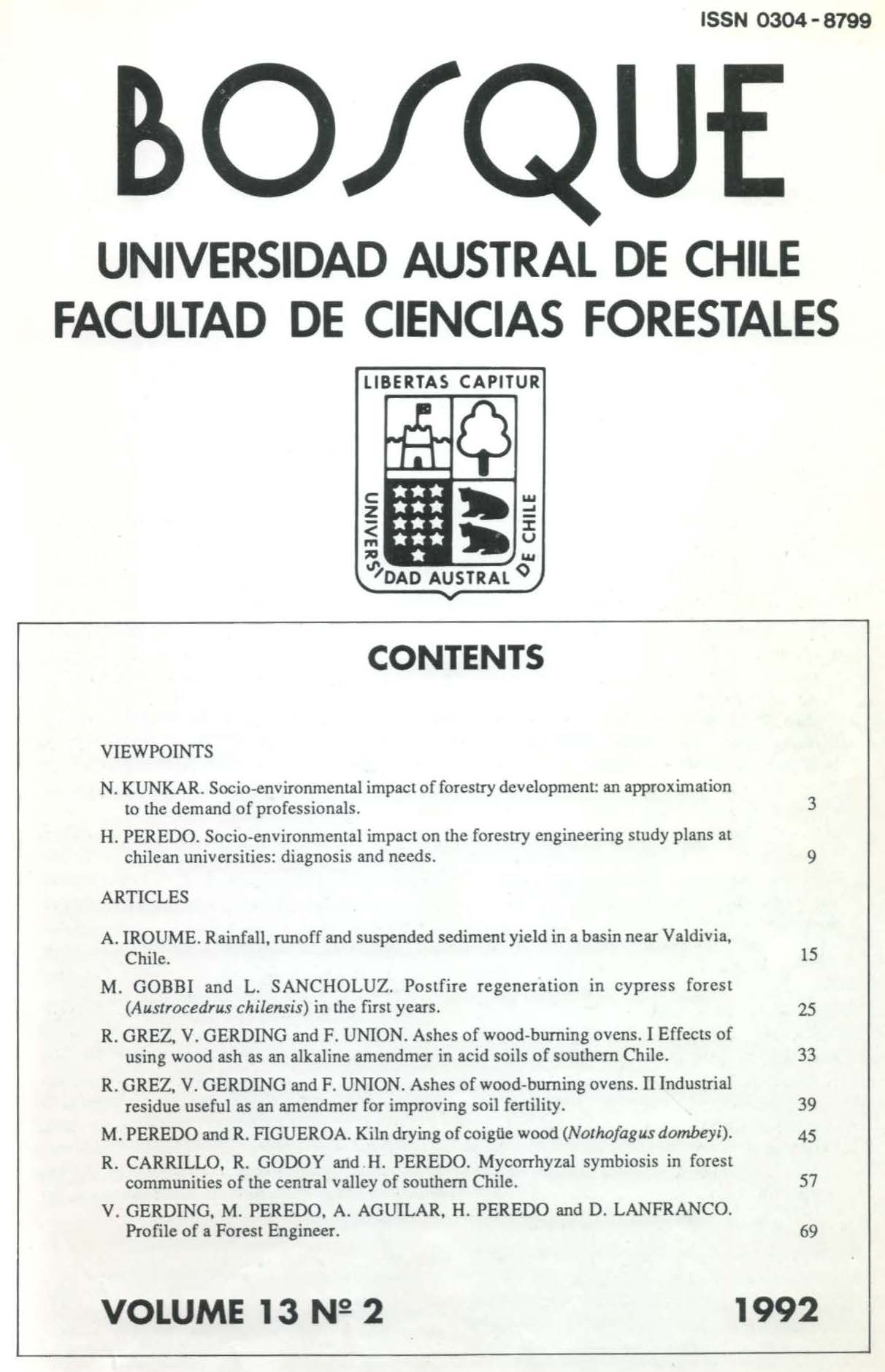Main Article Content
Dec 31, 1992
Abstract
Considerable information is available about natural ecosystems, with regard to mutualistic fungus plant symbiosis called mycorrhizae. This symbiosis has an active participation in nutrient uptake and transport and influences the structure and stability of plant communities. With the objective of proposing utilization of the natural forests, considering the accelerated process of explotation, due to agroforestry activities, the presence and distribution of mycorrhizal symbiosis in four forest-communities in the Central Valley of southern Chile was studied. This research is basic for future applications in the restoration of these ecosystems and useful for inoculation programs with selected mycorrhizal strains. The analysis of registered vascular flora in the forest of Nothofagus obliqua, Nothofagus antarctica, Peumus boldus and Myrceugenia exsucca indicated that 91 species, from a total 114 species studied, were found to have mycorrhizal associations. The vesicular arbuscular (VA) mycorrhizal type was found dominating in the 4 forests communities (with 72.8%). The fallowing association were found in the forest under study: ectomycorrhizal in three species of Nothofagus, ericoid in three species of Ericaceae, monotropoid in Arachnites uniflora and Orchioid in Codonorchis lessonii. The structure and function of the different types of mycorrhizal symbiosis is discussed in relation to environmental factors such as: soil, climate, and nutrient availability wich are characteristic of the area studied.


